#fertilizer
Text
"A new community housing development in the Bronx will feature a cool piece of kit: an on-site aerobic digester that can turn 1,100 pounds of food scraps into 220 pounds of high-quality fertilizer every single day.
Built by Harp Renewables, it’s basically a big stomach filled with bacteria that breaks down food scraps and wasted food into their component parts, and in the future could be a standard part of all apartment units as the amount of food waste in American reaches 30% of the total mass of all trash collection.
The Peninsula, organized by Gilbane Development Company, will feature 740 units of affordable housing, 50,000 square-foot light industrial space and equal sized green space, and 15,000 feet of commercial space, all of which will send their castaway comestibles right into the digester...
Fast Company reports that Christina Grace, founder of a zero-waste food management company, helped plan the design and implementation of the digester into The Peninsula, and helped organize a 40% grant from the city to pay the $50,000 upfront cost.
“The goal is for this material to work its way into the community garden network in the Bronx,” [Christina Grace, who helped plan the design] told the magazine, adding that she expects it to pay for itself over just a few years. “We see this as highly replicable in both commercial and residential venues. We know there’s a need for fertilizer.”
Producing fertilizer right there in the city reduces the need for it to be trucked in from afar, chipping away, even if just a bit, at NYC traffic.
Big problem solver
Perhaps uniquely beneficial to New York City compared to other spots in the U.S. is that the digester will have a significant impact on the Bronx’s share of the city’s rodent problem.
Those who’ve watched the Morgan Spurlock documentary Rats will understand why that’s significant—while those that haven’t will have to imagine what living in a megacity where rats outnumber people by around 8 or 10 to 1 looks like.
Another big problem the bio-digesters could potentially help is pollution and greenhouse gas emissions. Fertilizer is a big emitter of all three of the most-targeted GHGs. Fertilizer, like quarry dust and ammonia is, like so many commodities, often imported from countries who specialize in its production, such as Norway, but also Russia and Ukraine, whose conflict has recently highlighted the fragility of the supply chain with sharp increases in prices...
Bio-digesters by design keep the CO2 and methane in the fertilizer produced, rather than it entering the atmosphere.
For these reasons and more, the aerobic bio-digester is slowly making its way into residential and industrial spaces around the country.
GNN reported on an enormous bio-digester at the heart of the D.C. advanced resource (sewage) recovery center outside the capital, and on the use of bio-digesters on Australian pig farms which are helping reduce the environmental and psychological impact of the effluent produced from such operations.
Harp Renewables tweeted how happy they were to have installed their bio-digester in the town of Cashel, Ireland.
Expect to see more stories like this pop up around the globe."
-via Good News Network, March 17, 2022
Note: Obviously gentrification bad and "affordable housing" is sometimes nowhere near as affordable as it should be, etc. etc. That said, this is such a fantastic use case that I felt I had to post it anyway.
#new york#new york city#bronx#bronx new york#supply chain#fertilizer#circular economy#sustainability#sustainable architecture#sustainable agriculture#united states#apartment buildings#bio-digester#good news#food waste#organic waste#hope#hope posting
323 notes
·
View notes
Text
"Despite the belief that leaving leaves will suffocate the lawn and leave them patchy, this isn’t the case.
According to The Farmer’s Almanac blogger Robin Sweetser, “pound for pound, leaves contain twice the mineral content of manure,” making it more powerful than the normal fertilizer and mulch that homeowners purchase each year.
By using leaves, homeowners are saving money on fertilizer and mulching that leaves will naturally do for free.
Environmentally, rotten leaves also act as food, shelter, and nesting or bedding throughout the winter for wildlife, bugs, and microorganisms. Moths and butterflies are known to winter in leaf litter, with birds and toads hiding beneath the leaves or picking through them in search of food.
This far and away beats the alternative of placing leaves in landfills, which FoodCycler warns can produce methane gas (CH4), which is 25 times worse for the environment compared to CO2 and traps atmospheric heat."
#txt#earth stewardship#eco#gardening#autumn#autumn leaves#fertilizer#mulch#mindful consumption#eco conscious#slow living#soft living#rewilding#conservation#wildscaping#raking leaves#holistic leveling up#leveling up#that girl#green juice girl#ecofeminism#sustainability#sidewalkchemistry
151 notes
·
View notes
Text

"Salmon Run"
Is she bringing the salmon up the bank to fertilize the trees, or to eat it? Why not both? 🐟🌲
12"x16" acrylic on reclaimed support
#art#traditional art#coyote#acrylic#painting#animal art#primitive wiggles#naive art#anthropomorphic#salmon#pnw#ecosystem#fertilizer#cycle of nutrients#circle of life#fishmeal
205 notes
·
View notes
Text
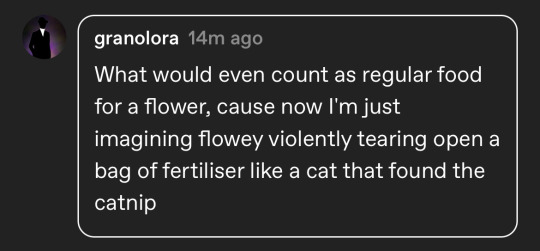

Thanks @granolora
#evidently not baby flowey#telling you just in case#undertale#flowey#ask flowey#ask blog#art#ask undertale#small artist#undertale art#undertale fanart#paper art#flowey undertale#shitpost#funny#catnip#flower catnip???#fertilizer
21 notes
·
View notes
Text

82 notes
·
View notes
Text
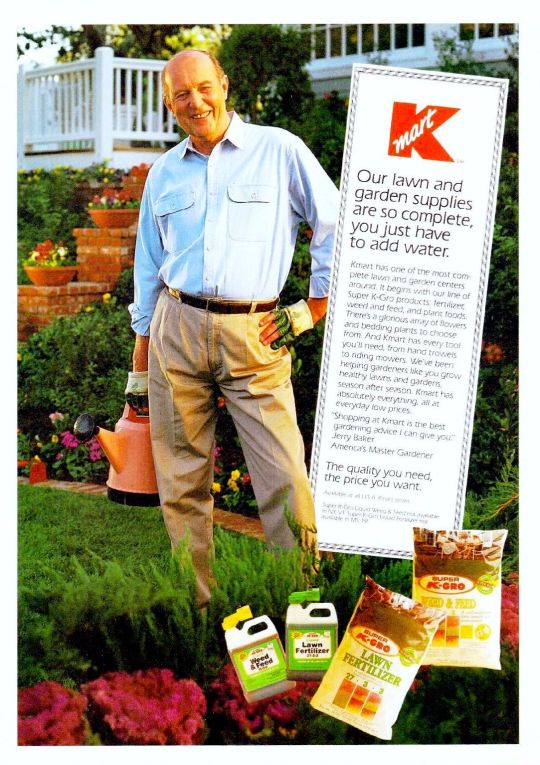
Kmart Corp, 1991
#K-mart#ad#1991#lawn and garden#advertisement#1990s#gardening supplies#fertilizer#weeding#90s fashion#advertising#retro
62 notes
·
View notes
Text
I reckon a proficient fertiliser trader should stay updated on commodity prices and trends. Wheat, soya, and corn are displayed on my second screen.
So, a few reflections on last week's corn fluctuations. This past Friday, corn at CBOT surpassed a psychologically significant level of $4.00 per bushel, concluding the week at $3.99 per bushel. This marks the first time since November 2020, and it's happened relatively fast: at the end of October 2022, corn cost $7.00 per bushel!
However, I'd like to highlight a couple of crucial points:
- $4 in 2022 doesn't carry the same purchasing power as $4 in 2020.
- Let's compare the prices of fertilisers now and in November 2020 (the first number corresponds to 2020):
NOLA UREA $224 vs $346
NOLA UAN $125 vs $257
NOLA DAP $351 vs $560
AG UREA $259 vs $380
EGYPT UREA $252 vs $400
Furthermore, consider the fact that the net position of funds in corn is showing the largest negative number in the past 12 years - 340,742 sales contracts.
It seems like there's little hope for corn price recovery, but fertiliser prices continue to hold steady. Nonetheless, one way or another, something ought to change. And in my personal opinion (which may be wrong, of course) - fertiliser price correction would happen rather soon this spring.

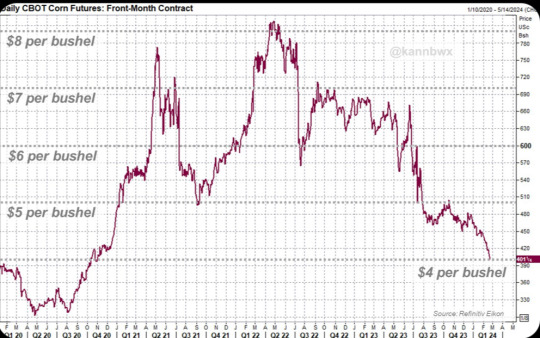

12 notes
·
View notes
Text

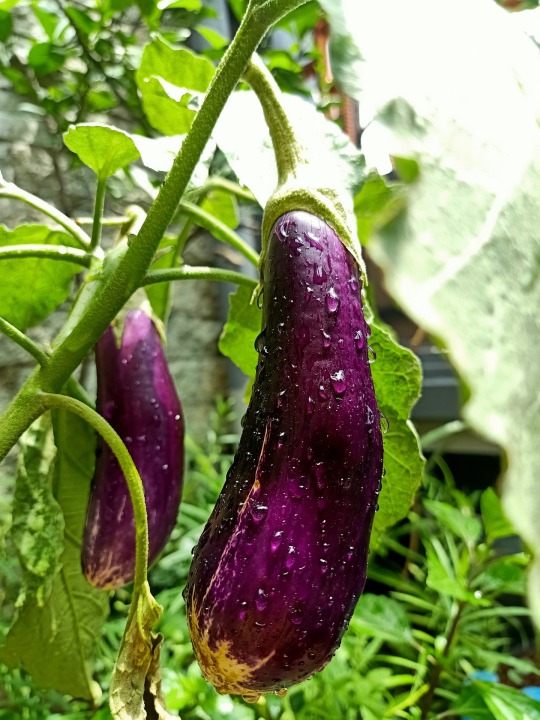
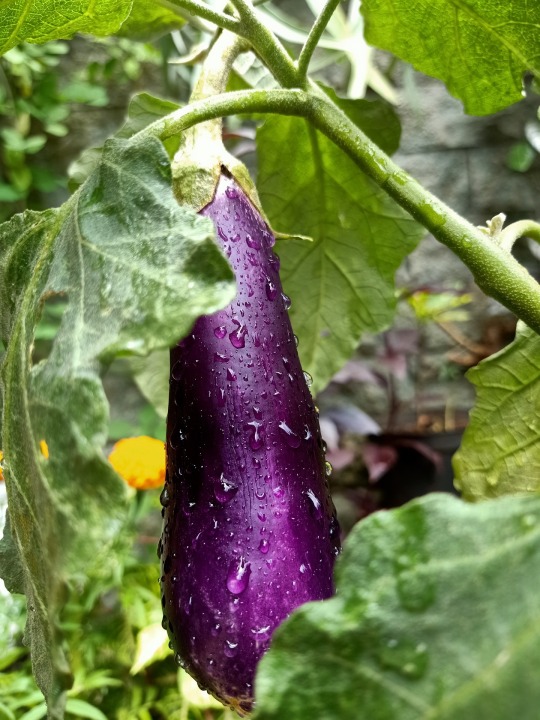
Aged chicken manure is a nutrient-rich organic fertilizer that provides a range of benefits for your eggplants.
READ MORE:
Boost Your Eggplant Harvest with Aged Chicken Manure
#gyo#gardening uk#gardenchat#organic gardening#gardening#backyard#vegetable gardening#lovegardening#gardening tips#garden#eggplant#organicgardening#gardeningtips#naturalfertilizer#growingvegetables#fertilizer#growyourownfood#growingveggies#vegetablegarden#vegetables#veggiepatch#growyourown#homegrown#greenthumb#mygarden#backyardgarden#growsomethinggreen#instagardenlovers#thehappygardeninglife#gardeninglife
17 notes
·
View notes
Text
42 notes
·
View notes
Text
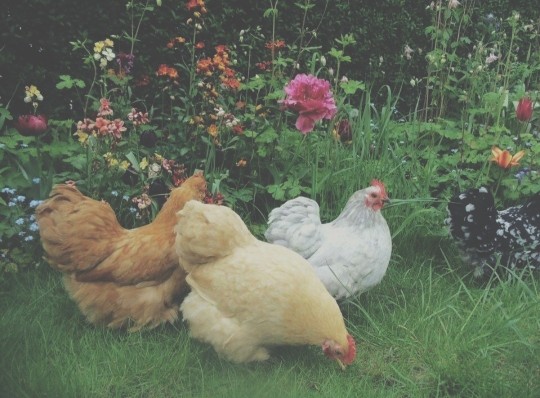
wow
#weheartit#nature#cottagecore#dream#forest#happiness#natural#life#🐥#chicken#heritage chicken#heritage chickens#chickens#blue chicken#wild flowers#garden#cottage garden#composting#fertile eggs#fertilizer#biodynamic#permaculture#one with nature#fluffy friends#fluffy#farmcore#farm animals#farming#hobby farm#homestead
109 notes
·
View notes
Text
"In Washington D.C., a sophisticated sewage treatment plant is turning the capital’s waste into a form of capital: living capital that is fertilizing the gardens of farms of the Mid-Atlantic region and saving vast quantities of resources.
Described by the workers’ there as a “resource recovery plant,” D.C. Water run a biogas plant and high-quality fertilizer production in the course of their dirty duty to ensure the city’s waste finds a safe endpoint.
The nation’s capital is exceptional at producing waste from the toilet bowls of the 2.2 million people who live, work, and commute through the city and its suburbs.
Reporting by Lina Zeldovich reveals that rather than trucking it all to a landfill, D.C. Water extract an awful lot of value from the capital crap, by looking at it as a resource to send through the world’s largest advanced wastewater treatment plant, which uses a “thermal hydrolysis process” in which it is sterilized, broken down, and shipped off for processing into “Bloom,” a nitrogen-rich, slow-release fertilizer product.
The other “Black Gold”
At their facility in southwest Washington, huge aeration tanks percolate the poo of everyone from tourists to the President. After it’s all fed into enormous pressure cookers where, under the gravity of six earth atmospheres and 300°F, the vast black sludge is rendered harmless.
Next this “Black Gold,” as Zeldovich described it, is pumped into massive bacterial-rich tanks where microbes breakdown large molecules like fats, proteins, and carbs into smaller components, shrinking the overall tonnage of sewage to 450 tons per day down from 1,100 at the start of the process.
This mass-micro-munching also produces methane, which when fed into an onsite turbine, generates a whopping 10 megawatts of green energy which can power 8,000 nearby homes. [Note: Natural gas (which is mostly methane) is definitely greener than coal and oil, but it still causes a significant amount of emissions and greenhouse gases.] The 450 tons of remaining waste from the D.C. feces are sent into another room where conveyor belts ring out excess fluid before feeding it through large rollers which squash it into small congregate chunks.
D.C. Water sends this to another company called Homestead Gardens for drying, aging, and packaging before it’s sold as Bloom.
“I grow everything with it, squashes, tomatoes, eggplants,” Bill Brower, one of the plant’s engineers, tells Zeldovich. “Everything grows great and tastes great,” he adds.
“And I’m not the only one who thinks so. We’ve heard from a lot of people that they’ve got the best response they’ve ever seen from the plants. Particularly with leafy greens because that nitrogen boost does well with leafy plants. And the plants seem to have fewer diseases and fewer pests around—probably because Bloom helps build healthy soils.”
While farms around the country are facing nutrient depletion in soils from over-farming, turning to synthetic fertilizers to make up the difference, introducing more such thermal hydrolysis plants could truly revolutionize the way humans look at their feces—as a way of restoring the country’s soils rather than polluting them. As Mike Rowe would say, it only takes a person who’s willing to get their hands dirty."
-via Good News Network, November 23, 2021
Note: You can buy this fertilizer yourself here!
#older news but still relevant#you can go buy this fertilizer yourself!#sewage#sanitation#fertilizer#sustainability#circular economy#sustainable agricuture#nitrogen#waste#waste management#waste disposal#good news#hope#hope posting#washington dc#dc#united states#district of columbia#urban farming#solarpunk#urban gardening#environmentalism#farming#rooftop garden#gardening#edible gardening#toilet#soil#soil quality
128 notes
·
View notes
Text
I went to Pets at Home to get some fertilizer for my plants and got carried away🥲

Say hello to Larry🥺
I also got some moss for my wood but it looks awful right now so when it grows a bit I will show it!
#marimo moss ball#moss#moss ball#fish#aquarium#fish tank#zebra danios#freshwater aquarium#fish keeping#zebra nerite snail#zebra nerite#live plants#planted aquarium#plants#fertilizer
7 notes
·
View notes
Text
91 notes
·
View notes
Text


Recent Acquisition - Ephemera Collection
Richmond Guano, Standard Since 1892.
23 notes
·
View notes
Text
Karina Gonçalves David, a small-scale farmer representative from Brazil, is concerned by the presence of powerful and polluting firms. “If they are inside, they have an advantage. This place is about solutions to face the climate crisis but the companies are appropriating it to do lobbying. They are going the opposite way.”
The world’s top five meat companies’ emissions are estimated to be significantly larger than those of the oil firms Shell and BP, while the dairy industry’s 3.4% contribution to global human-induced emissions is a higher share than aviation.
Outspoken meat lobby groups are also on the ground in Dubai, including the North American Meat Institute, which as recently as 2022 claimed the extent of human-made climate breakdown was “unknown”.
Producers of pesticides have also turned out in high numbers this year, up 30% compared with 2022.
Together, Bayer, Syngenta, BASF and their trade association, CropLife, which has pushed back against attempts to enact new climate measures, sent 29 delegates.
Raj Patel, of the sustainability thinktank IPES-Food, said: “Just as with the influx of oil lobbyists, industrial agriculture businesses are scared. They have read the science and they know how much their business has driven the climate crisis.”
Big food and farming representatives are keen to steer conversations away from dietary change, which is under discussion at the summit. On Sunday, the UN’s Food and Agriculture Organisation will release the first draft of its plan for achieving a sustainable global food system, which is expected to call on rich nations to cut meat consumption.
This follows the recommendation of the Eat-Lancet Commission, which suggests people consume no more than 15.7 kg a year. In 2020, the average American consumed 126kg of meat.
Smallholder farmers are worried they will be sidelined by the power of the agribusiness lobby. A recent report showed small-scale producers get just 0.3% of international public climate finance despite producing a third of the world’s food.
Most corporations, lobby groups and NGOs that attend the Cop climate summits have “observer” status, but the analysis shows an increase in the number of industry representatives attending Cop28 with their national governments, making companies and lobby groups party to diplomatic negotiations.
Participating as country delegates, says Nusa Urbancic from the Changing Markets Foundation, means that industry may be perceived more as peers by policymakers who then give greater credibility to their positions.
The highest numbers of agribusiness representatives were brought in by Brazil, with 36 delegates linked mostly to the meat industry. Next in line was Russia, which handed out 15 passes to people affiliated with fertiliser companies and lobby groups, followed by Canada, which offered tickets to eight more delegates from fertiliser firms.
Fabrício Muriana, from Brazil’s Instituto Regenera, who is attending as an observer with the Global Alliance for the Future of Food, said: “They are here because they knew it would be a food Cop. It’s a cynical move because these people are not even beginning to scratch the surface of reducing harm, let alone addressing climate. We need stricter criteria on who is coming, and with what intentions.”
Big food companies have announced a handful of voluntary initiatives at Cop28. One is the UAE- and US-led Aim for Climate partnership, which has been criticised for skewing heavily towards techno-fixes and the commercial interests of large corporations.
The new analysis gives only a snapshot of the industrial agriculture sector’s influence. Agriculture and trade ministers, which fell outside the scope of the analysis, have been fierce advocates for the interests of agribusiness at UN events in recent years.
Government officials from Brazil and Argentina – both big producers of beef – pushed to water down scientific recommendations about reducing meat-eating in the latest IPCC report.
The US agriculture secretary, Tom Vilsack, a former dairy lobbyist, told industry groups before Cop28 that the US would use the summit to advocate for its market-based approach to agricultural policy, which shuns calls for regulation of industries such as meat and dairy.
#excerpts#cop28#lobbying#insider politics#fertilizer#agriculture#pesticides#agribusiness#climate change#environment
6 notes
·
View notes
Photo

Western Auto Supply Co, 1952
#Wizard#ad#1952#mid-century#lawnmower#advertisement#vintage#1950s#power mower#midcentury#advertising#lawn conditioner#fertilizer#yard work#grass#mid century
151 notes
·
View notes